 For the purposes of these segmented reviews of of the three books composing an e-Book offering , I have so far emphasized the mythological purposes behind my reinterpretations of Early Greek Myths for their prehistorical validity. Do they enable a reconstruction of of an actual biography about a leading mythic personage? How valid is it at challenging and then overcoming alternative mythology by the much later Ancient Greeks, by open defiance of realities that they couldn’t even notionally address for lack of the pertinent knowledge available to them?
For the purposes of these segmented reviews of of the three books composing an e-Book offering , I have so far emphasized the mythological purposes behind my reinterpretations of Early Greek Myths for their prehistorical validity. Do they enable a reconstruction of of an actual biography about a leading mythic personage? How valid is it at challenging and then overcoming alternative mythology by the much later Ancient Greeks, by open defiance of realities that they couldn’t even notionally address for lack of the pertinent knowledge available to them?
For instance, classical studies buffs among my audience have had to dismiss the Hellenistic Age mythography by Apollonios of Rhodes about Iolkos and his hero Jason son of Aison born there, at a time,l moreover, that he does not even try to date within centuries so much earlier than that he lived in. He postulates the skipper and large crew of the famous ship Argo as some kind of reckoning of when they might have congregated with each other. For if they did, I have to understand that the Argonauts so-called lived the early Fourteenth century BC, or long afterwards the life time of Cephalos and his any sired progeny. Indeed, the crew was composed of members living heroically at the time their grandfathers or fathers were in their primes of manhood, while yet other crew members were boys, or lads, a few of them even babes in the arms of their mothers, even though Apollodoros does not contend with any issue of dates of lifetimes for any of them. He also write about Jason’s navigation of quest whose itinerary took the Argo to the far side of the Euxine Sea to an exotic landfall settled by a kingdom of worshippers of Helios Hyperion the earliest names for the Sun God of the pre-Hellenes. They embarked from Iolkos where was postured an active seaport offering strategic advantages to a location at the head of Pagasai Bay, where a harbor that had to have presented every inconvenience as settled away from active sea lanes that lead overseas or out to near western coastal shoreline of the Aegean Sea’s severally named waters as seas themselves. But most of all Jason and the Argonauts are under tutelary protections of the Olympian deities, different gods or goddesses respective to the crew members which making up, howsoever haphazardly, an impressive genealogy spanning several generations of the important mythic personages much younger than Jason who led them all as a youngster of an age incomparable to their own.
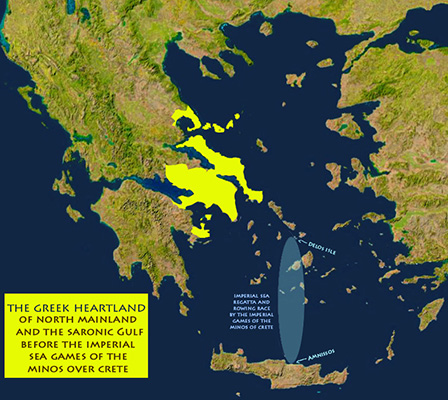 <——- The Relevant Geography of the e-Book trilogy of Books One through Three in Serialization.
<——- The Relevant Geography of the e-Book trilogy of Books One through Three in Serialization.
Accordingly, for lack of so many relevant details about times and places within the atlas of antiquity I have had to reason that Cephalos was a budding seafarer at earliest prowesses practiced at building merchant or war navies for the Saronic Gulf Rim Powers. He left behind a small coast guard which he had commanded with three boon friends as co-equal naval commanders of oared warships, having persuaded in 1372 BC that that small naval force was worthy of commissioning 75 advanced war vessels that would clearly exceed in speed and seaworthiness the out dated warship aboard which he’s helped a Cretan Commander triumph at the last Imperial Sea Regatta’s long race between Amnissos of Crete and Ogygia of the Mid Sea Isles and archipelago. He was himself setting forth to Trials-of-Bridal with an ambitious portfolio of maritime objectives to earn Attica foremost accomplishments as potential naval to greatly outclass imperial Minoa, a fading sea power of thalassocracy.
After consummating his wedlock to young Phima, with mutual libidinous energies splurged between their laps, he began to essay the necessary diplomacy and developments of naval logistics and coordinated infrastructure for Great King Aiakos (her liege sovereign)while she was preoccupied with the pregnancy of the one child wanted from the brief royal consortship between as high ranked wards of realm. By the time she delivered the baby boy many landfalls had been selected for excellent locations on each side of the whole length of the Strait of Abantis. In order to be as intimate with her as much as possible, meaning lots and lots of zesty carnal couplings even she’d become large with child, his boon friend Phereklos was constasntly at liaison at the imperial great court of Aiakos at Phthia of the Upper Strait, while addressing his partnership with Cephalos at undertakings along the Strait as far as the Narrow later to be called the Euripus Canal; that gave him naval hegemony over all coastline and newlt developing landfalla and.or havens of New Lokris, a burgeoning feudatory east of the Lake Midlands awhile the further resurgence of its displaced people as once downtrodden refugees from the Minyans who had rubbed out their ancestral realm above Phthiotis. Below the Euripus, Cephalos’ two remaining greatest friends, the princes of Attica Phaiax and Nausithoos, were undertaking all 75 new launched war galleys by manning them with commands and young ensigns for constant circumnavigation of Abantis Island and the Mid Sea Isles as regular circulatory patrols. They also served heraldically by keeping themselves greatly informative and acquisitive at all the poop and important lowdown far south that Cephalos was absent from while away “from home.” The four Attican princes, therefore, made up a cadre of rapidly developing and enlarging veterans and able seamen for the future of fleet squadrons, whose own inceptions were in advents set for beyond the expired term of the royal consortship, which I shall shortly discuss with great particularity and enhanced robustness.
Both Phima and he had no duties whatsoever to perform by attendance upon the royal court of her father and guardian. She welcomed the tutelage of Cephalos, who was so easy at independance and used to it, thereby allowing himself to be readily summoned while he pursued his own active agenda. Her interests he pursued handily as well, but mostly in continuation of introducing her to her own people. Glad for the marvel of her popularity, her love deepened in to a great dependence upon him. She became his royal duty, and their independent activities beacem increasingly easy to coordinate. She mostly wanted to be with him, even after their boy together was weaned, another duty by itself upon which she was devotional. Haemonia, from whose lame and halt royal court they were shunned, was as petty as her father and selfish stepmother rendered it. They were utterly playful at their own hospitality by their marriage of outreachtogether, but just as he’d done assiduously at conditioning himself for the trial competitions, she and he both made energetic collaboration to know and be known among far people of the Great Kingdom. Her uncle-Erginos had all the necessary proxy powers and plenipotentiary status by Great King Aiakos to assist many demarches of trade expansion and markets acquisition. Delegations welcomed to Iolkos turned Pagasai Bay away from a backwater town to a budding entrepot of many naval outreaches most willing to cross the bay for their hospitality over fair bargainings outbound and inbound the Strait of Abantis. Representatives from deep interior petty realms, including still probational feudatories that constituted the Lake and Upper Midlands, came from westernmost Magnesia and the far piedmont beneath the Lower Pindus Mountain Range. His bon friends from Attica were properly admixed their own courtship of commerce and fair barter exchange of new offerings into markets overseas, it in reverse of arrived caravan itineraries. Evenings were spent at confabulations between so many visitors, which persons were curious and constantly solicitous of new cooperatives within the scope of the soon many enlarging enterprises.
Cephalos went too bed always a very busy young man, and yet his first priority always was to pleasure Phima. Ever famished to have him, he was met with all the alacrity that her frothing and buoyant youth commanded of him. And all that while she was earning the self-confidence and the required adroit comportments to go with her total absorption with Magnesia as suddenly a most promising equestrian culture wholly alternate to the militant regimes of the restless Minyans off the North Plains, as Magnesia became enveloped by her dependent denizens indigenous to the Magnesian Mountain Range. Indeed, the only thing that neither of them ever did was any practice of courtship upon the Great King at his capital high city of Phthia. Because, it became clear, Aiakos himself became so moved and inspired by his Attican liaison Phereklos that they were constantly overseeing his highest appointed ministers and underlings at their good shows of organizational and coordinate initiatives of commercial alliance.
Accordingly, the very small world within which all principals at capital initiatives were at play with each other was more than enough to consolidate everywhere the eastern north mainland. Howsoever well-earned or necessary the largess of Aiakos to intensify his imperial ascendancy, about it perse the Later Ancient Greeks proved utterly silent and indifferent. Of course, most of my academic sources had such Ancient Greeks assuming themselves correct at downplaying both Cephalos and Aiakos. They firmly decided that both great men, last patrtiarchs, deserved only dimishment if not expunction of the real lifetimes of renaissance from the Minyan blight beforetimes their active century. And yet the Second Great Era of Oared Vessels paraded forth, whether merchant Round-Hulls or elegant war galleys, steadily progressed through the initial small counts of ships to the many slipways upon spotted coastal landfalls that enabled nigh geometric growth of launches upon the sea ways plying north and south or eastward overseas. It all was magnificently covert as well; that seemed to be the manner of the two foundational principals. Imperial Minoa had not the wits or the constructive curiosities to temper their combined initiatives for the north mainland. She was not owed fealty to have known or reported to her anything shaping intelligibly about whatever underway, next conceived or openly in prospect. The Minos Lykastos died early 13721 BC. Accordingly, the Sacred League of traditional small or insular loyal fealties, a sustained resurgence by Crete was over and done with, too.
Phima compelled herself to her motherhood in consequence of a consortship that had liberated her from her jealous stepmother and overly retired father from his majesty. Cephalos had to turn his mind back to affairs that he’d delegated away to his boon friends of Attica and the many new command echelons of navy and merchant marine which was part of the bargain for sending him away to a foreign and deliberately brief wedlock by consortship. The weaning of the baby had broad purpose to the arrangement, but his upbringing was soely for the Princess to undertake. Nobody outside of the court of Haemonia wanted him to shove off and make away homeward. A more permanent marriage would require her remarriage for a term of 100 solar month, a duration that was termed a great year. It was standard for terms of exile, but also for remarriages that intended husband and wife interlocked a whole lifetime if that term passed as abiding love and consent to a formal search.
Ranging afar for the most natural expansion of Magnesia:
That the New Greek Mythology need no longer countenance a grim fairy-tale myth of origination going forth from Iolkos leaves us to wonder how a fantasy quest for a Golden Fleece could have had any genuine meaning to the famous principals behind the Saga of the Heloides. Essentially begun as the marriage of Aietes and Idyia [Eed(ee)yah] that undertook quest for the great mineral wealth reputed by far western seafarers, the Ancient Greeks turned it in to a success story about unimaginable wealth, the finding or breeding of sheep of gilt fleece made the most important derivative treasure in part of its accumulated trove. The Saga’s second part was about Jason on mission to find that particular trove which had fallen under the guardianship of a lethal breathing dragon. The inclusion of that winged monster was an aberration of the allegorical meaning of dragons to earliest cultures of pre-Hellenes. For the dragon was regarded a particular blessing by protection of women under divine grace. A dragon could fly and thus it could defend by taking mission of flight abroad to intercept an enemy farfrom the bounds of the womanhood it was meant to safeguard. The fiery breath, which a dragon could “throw” over long distance to render any terrain of hostile valiant scorched and worthless meant a dragon’s other defensive means was that of burnt earth, the Great Earth Mother entirely acquiesce with such force, and with the intense short distance blast of white fulminated flame upon a specific enemy.
But at lore and allegorical significance the Ancient Greeks lost over the five hundred years and more of Dark Age over Greece, from the 1190s decade onward that retired matriarchy as a once greatly venerated polity of meaningful female gorvernance. Medeia, the heiress to her mother Idyia was far ahead of her highest emposered sea in wishing to foresake her father and his progeny by the late Idyia. She wanted back to her mother’s homeland of the Lower Isthmus of Ephyrea. That was her matrimony in the original definitive sense of “personal commonwealth and wear-the-well” to very powerful governance. Jason appeared to Aietes upon a most dangerous quest for the Golden Fleece, by slaying the breeder ram regularly at cover of gilt fleeced ewes of sheep. Medeia, then a fifteen year old daughter of Aietes and gifted with study of sorcery by her aunt the Heloide Cirke [SEER-kay], the sister of Aietes, never fell instantly or deeply in love with Jason; but she promised herself in wedlock to him if he and his famous crew of the Argo would return to his homeland with her aboard. Upon that return she would assure his accession over the powerful uncle who had sent him upon the quest of the Golden Fleece after putting down his brother the higher claimant of sovereignty, Aison. Forthwith, the Argo set forth upon its itinerary overseas the Black Sea, the ProPontis and the White Sea [the Aegean as first known by a Cretan name]. Aietes chased after her, but she had taken her much younger brother, a small boy as hostage. She cut him to small pieces and three them overboard into the retreating wake of the Argo. Aietes was a principled man required to collect the body of his slain son, relentlesslt at doing so, even to slowing his pursuit to do so. Jason cleared way to safety after passing down and beyond the ProPontis at leave of the Black Sea.
At home and formally confronting his uncle. the king Pelias, who had never believed that Jason could slay either the guardian dragon or the supposedly immortal ram of golden fleece, a major contretemps ensued that’s a varied story. Jason declared himself his father Aison’s heir and managed to have all the important subjects of the unspecified realm (definitely not Iolkos) agree to arbitrate his ascendancy, or not, to the kingship [to which Jason had been born under the patronymic of Diomedes]. Medeia spent her time both ingratiating and impressing the three daughters of Pelias with her powers at works of great magic. One of her marvelously inventive feats was transformation of age from exceeding old to very young again. She showed how by saving an old ram on his last legs, by first wrapping him in leather, then putting him into a pot of potent herbs, and slowly bringing the partially insulated ram to suffer the boil. As instantly the writhing of the old ram, she dunked him majestically, then pulled out a spry new born kid out of the effluent of the sunken corpse of old ram. The daughters were amazed as two of the daughters then replicated the feat hand in hand with instructor Medeia. Only their sister, the third daughter named Alcestis, refused to even try to essay transformation of a living beast, whether from old age and end of life to new life or not. But by then, the two daughters of Pelias convinced their father, bringing him to a huge pithoi jar brought to boil by means of yet a third demonstration. It, too, convince Pelias to subject himself to the transformation of his own person. The two daughters took guidance of Medeia a last time and they altogether subjected a most willing Pelias to her magic. Jason and the crew of the Argo hastened to ready the ship for flight. Upon its launching, Medeia attuned the timing of embarkation after her ruin of Pelias. The king wrapped and insulated against the boil, Medeia had special magic otherwise by the refinement of the metal Magnesium to pure sheets of ingot. As the boil had begun, she told the two daughters to cast the ingot to the fire hearth over which the huge urn was nested with Pelias within it . With a subsequent motion of one hand to cast an anesthetic into Pelias grimacing face, and with another at handing the magnesium to the daughters, she sparked the calamity which followed……..
SCREAMS, BANG, FLASH AND CACOPHONY! A cloud of pure white power attested ignition of the volatile Magnesium, which obediently surrounded the pithoi urn with fiery white flame!. She slipped away instantly, climbed a stern ramp to board the Argo, just as the screams over the fainting of Pelias. Another instance of flash point of magnesium, from solid state to explosive white vapor, one immense fulminating cloud maintained a dense gravity that kept it in place over the hearth. Jason was left with the choice to assert his royal claim to succeed Pelias instantly, all spectators at witness fully impressed with his emboldened powers to exercise so instant a usurpation. Jason immediately turned craven instead; and even would have deserted Medeia, except she wisely had leapt aboard the Argo before Jason could have a next bright thought of utter treachery. Medeia saved her own life and committed the ennobled crew of the Argo to protect her until her suppliance to her motherland of Upper Ephyrea. A short voyage was quickly undertaken and accomplished by navigating the Asopos River through Aionia, where suffiecient depth of water at this most ancient time of the incidents now described. All had come together incisively for Medeia to conclude the Second Part of the Mythic Saga about the Heloides [Heh-LOW-ee-thays].
Wherever this calamitous magic occurred, it was on the way to the AcroKorinth of the Isthmus of Ephyrea, the region that had future Corinth and Megara a bridge between the two mainland divisions of the Greek Peninsula. The Third and Last Part of the Saga divides audience attention one story line away about the family of Medeia’s sister Chalkiope, her husband Phrixos and his sister Helle [HAY-lay]. Aietes had remarried Ino, who proved a wicked stepmother with want to destroy Phrixos and Helle. The storyline that goes another way was about Medeia’s ascendancy over the cowardly Jason who had forsaken her restoration of him to his homeland kingdom. Medeia’s powerful pedigree had her soon to superior positions over the Ephyreans, allowing her to raise Jason to the appointed powers of the Phylax, or Keeper, of all souls Isthmian. Our Fourth Book about Cephalos tells that story, as does the First Book about Aigeus of Attica as how become well met of Medeia, and soon at compact to save her from deeds she could not hesitate to perform but would earn her safe exile from her motherland of Ephyrea. He promised to take her in suppliance to him after she had committed her deeds, lethal or otherwise most calamitous as was her was at all deeds.
So Cephalos makes up for the mostly lost story of Jason and Medea by the Ancient Greeks so that he can make with Phereklos the great accomplishment that Jason supposed affect, but did not, at bringing great fortune from the shores beyond the Bosporos, whose strong channel flow divides the continent of Eurasia into Europe and Asia! For once Princess Phima would not join the two men at adventure of commerce to the Black Sea beyond the Bosporos. She refused to inform her beloved consort that she was pregnant with child again, and she was too gracious to deny Cephalos his possible feat of great good fortune to Magnesia. For she had utmost trust that whatever he did, he shared any bounty by the doing with her and her realm of Magnesia. Forthwith Phereklos and Cephalos led a squadron of fifteen war galleys up the then called Dardanos Strait that also cleaved Europe from Asia as a waterway to the far east Euxine (Black) and Hyrkanian (Caspian) Seas. Upon arriving to a lee shore upon the Bosporos, they were greeted with alacrity by a large colony of merchant who were most impressed with the warships at debut put before them. Intense parlay ensued most amicably after the merchant colonists introduced their immense grain barges brought to the Bosporos from the great grainlands inland the north coast of the Euxine Sea. Explaining how the enormous harvest were cultivated and harvested in the vague hinterlands of Drepana (meaning “Scything Land” as idiomatically translated), they wished Cephalos and Phereklos to entertain springtime convoy duty of the Barges so that they could essay distribution of the barged grain harvests throughout “the White Sea of the Cretans unto their Cretan Sea.” Inspecting the barges carefully, Cephalos came to bold surmise somewhat different from Phereklos brilliant scheme alternatively. Cephalos would deply his Attican war galleys from the Saronic Gulf to the entrance of the Dardanos Strait, to await the barges at downstream flow of the Euxine Sea as overpouring out of Bosporos at exactly that time and season of the Straits steady flow. His Saronic Gulf escort fleet(s) ad divided would barter the grain away to the Archipelago of many island groups throughout their expanses. Exchanges would be realized by southward bearings which the seasonal Etesian [Ett-EES-see-yan] winds would so readily facilitate. Then, after all the grain was distributed, he would see to a well managed return of the barges to the Dardanos Strait, where to wait the season when it ran tidally, thus to say neytrally as between high tidal inflow to the Euxine Sea and ebb tidal flow down the strait ever westward. For the channel flow remained no longer constantly downstream as it was in high flooding season of springtime to impede any easy navigation of the empty barges up and back the Strait to the Bosporos.
Phereklos was of another mind, but one that great supplemented the propose itinerary of the empty grain barges. What he proposed was that barges’ interior storage capacities for grains be converted into platforms over all bilges to enable standing horses, such steeds intended for export from the Strait of Abantis by the extensive horse ranching along the North Rim Sea (in part to the White, or much later Aegean Sea). The conversion of all barge holding volume from grain transport to conveyance of mares-in -foal, studding stallions and yearling colts bred for hauling chariots and carts. The holds would become stables for best bred horses thereby, whether they were exchanged for other horses of far foreign breeds, or from the horse ranches that the Coastal Trojan and Dardanians so superbly maintained by excellent reputations respective to each source grasslands. The merchant colonists upon the Bosporos would take the converted barges, or otherwise designed horse transports fro their wintertime preoccupations before the April, May and June harvesting that would fill them capaciously. Cleaning the barges befouled by the dung of horses would be easy by soaking them drowned in the three main debouches of rivers that flowed into the Euxine Sea during Europa’s snow melts into floods at highest levels of spate. Those rivers were the Ister (Danube), Bug and Dnieper. The parlay went to such large scale of forward thinking that all principals besides Cephalos and Phereklos became greatly excited. But that voyage of adventure must conclude with compacts elicited by Phereklos as led on tour by the merchant colonists to the sources of all springtime embarkations of grain loading to barges. Cephalos would return home as planned, there to arrangethrough the next winter the means for well-commanded and well-crewed escorts for the solstice season of full barges that would arrive that next springtime to the outflow of the Dardanos Strait’s last great bay and bayshore, which was the Scamander and Simois[SEE-moy-eess] Rivers of the Kingdom of Ilion (then pronounced Wilion). For its greater high kingdom of Troias was a center of horse breeding all by itself, by working various reciprocities with the back then higher equestrian cultures, such as the inland empire of the Hatti (Hittite) within Anatolia; and with settlers off the steppes adjacent to Armenia and Azerbaijan. Also most instrumental to serving as a winter season palatial entrepot was the capital kingdom of Ilion. Its prospects for Magnesia and Attica at interplays of horse trading and equine transport by regularized transport flows befitted the services of exporting Horse or to abetting the staging of grain convoys outside of its nearby passing Dardanos Strait, the later and famous Hellespont*.
The Quiescence of Imperial Minoa throughout the Aegean Sea & Interior Flowing Seas
Book Three does not directly query for readers why the long standing hegemonies and ambits of imperial Minoa by Crete Island were disssolved or not. The academic consensus I was taught to believe with conviction attests firmly that Crete had lost such great sway in 1450 BC, when southwest Arzuwans of Anatolia and Argives by Tiryns of the Argolid Peninsula and Inachus River Valley ( a greatly irrigated plain, in fact) invested Crete. They separately or together, either way equally credible, occupied the many agrarian palace metropols (befitting alternatives to any large composite towns and urbanized coastal cities). They then, by 1400, had abandoned the metropols as too dense, too crowded and and unhygienic by settling suburbanly the superbly groomed planatations around the most famous of them {Knossos, Phaistos Mesara, Gortyna, Mallia, et al.]. All such dissolution was rendered as consequence to destruction of very large Minoan navies that were rubber out by the verifiably calamitous e eruption of the volcanic midsea Thera, now dated to 1505 BC.
I have delved carefully intoall new findings that have catalogued Crete’s new suburbia and coastal developments. The proper determination is a quiescence of the dominant invaders and occupiers, the bellicose Argives and Karians most exemplary, by pacifications of the native Cretan “high societies,” whose accultured womenhood both intermarried and smoothed subsequent Minoses, or great kings, pacified the mainland invaders off the Greek Peninsula and Anatolia. Over four successions, beginning from 1500 BC, Crete went through steady resurgence which rebuilt navies off the first era of great oared vessels while resuming the trading cartel shared between Crete, the Levantine fortress harbor cities and the Egyptians. Such resumed fixities, however, inferred a stale, mostly recumbent culture, even if efficacious to a comeback of Crete to her whole island status of a premier Great Kingdom and naval thalassocracy ruled from Knossos. The early part resurgence plotted numerous intermarriages of Mainland Tirynthians, the so-called Proitid Argives of the Argolid Peninsula, such as to hybridize a new nation race by 1400 BC as Creto-Mycenaean. I do not like that academic term-of-art, but I respect that the refreshed population mix engendered for Crete Island a realm that was a considerable high kingdom, even if still short of its greatness from before Thera’s eruption. I say that with care because the second to last Minos or entitles Great King, whom I name Lykastos, had married his son and heir the prince-Minotaur,( who became King Minos II of Classical Greek Mythology), to a native born matriarch of especial sacral majesty, Pasiphaia, until both were attesting an especially effective imperial co-regency over the first quarter of the Fourteenth century BC.
Lykastos resumed excellent relations with the ancestral matrarchy composing the Sacred League of isles and mainland petty queendoms of the Saronic Gulf, including Attican governesses over the MesoGaia ranging from lowest southwest Sikyon to East Bay Attica (Aktaia). The tithing of such feudatories did not effect the Isthmus of Ephyrea except for its wintertime colonies of highest merchant magnates who built opulent pied-at-terres as seasonally resident colonists. The best exemplar of the Isthmian matron theocracy that newly evolved was the child maiden heiress Endeis, to whom Aiakos son-of-Aegina was betrothed while a boy. She was supposed to afford as bride an exalted status to her future husband whom she married at their ages 16 and 21, respectively, after his ascendancy and ascension to Great King after his reconquests throughout the north mainland.
Lykastos proved to great adoration of, and respect for, Cephalos’ maternal grandmother Metiadusa and the Kekropid branch royal dynasty into which she married until her own old age. He had entered his dotage after an especially long reign as the Minos of Crete before 1390 BC, and so he never was as intimate with mother Herse or her taken consort, the entitled Kerkyon of Eleusis, as could have been fortunate. As a boy Cephalos grew up to hear much abuse of the bully Cretans whose imperial naval commands, the Sea Lords. lived a resident colony of the Pyrrhaios Strand upon Gulf Attica. Befriended of the coastal Lelegans, their mariner ethnicity of middle class township societies and communities of constructors taught the Ward of Eleusis to become very wary of the sea lords. They were a predatory ilk, especially after the prince-Minotaur of Crete began to allow their varying depredation at deep sea mains and convoy fareways along the Cretan Sea and the White Sea at just above it.
By the time of his brief consortship with Phima, which actually was extended into most of 1370 BC to enable the Great Grain Convoys effected by Cephalos and Phereklos with maritime colonists of the Bosporus, he was receiving news and formal report of much depredation within the Mid-Sea Isles (the Cyclades) of the Greek Archipelago. His excellent informers were princes of Attica Phaiax and Nausithoos, to whom Cephalos had delegated high command of an Attican coast guard and relegated sea duty to patrol with few but enlarging warship counts. They effectively made circuits of broad vigilance along the northern verge of the Mid-Sea Isles; they began from Brauron Cove of East Attica to roam outbound the Mid-Sea Isles and ranged northward exploratively until their returns via the Strait of Abantis. Always on the move as essential training exercises for onboard naval commands and crews, Cephalos concerted excellent hospitality of all returnees where the entrance of Pagasai Bay was passed by the upper Strait of Abantis. While those exercises of well-earned repasts and ends of circuit itineraries, the two princes and adjutant commanders of coast guard made layover of Iolkos for intensive briefings about wherever the Cretan sea lords were idling at depredation and outright piratical confiscations at deep sea of the White Sea within and around the Mid-Sea Isles themselves. We shall pick up on what all that information evolved to become over Books Four and Five of our next reviews of their e-Books. Suffice to say just here and ahead of them that the Cretan war navies were plotted geographically for their own insular haunts, places for ambushes to beset passing convoys and their logistical landfalls to receive resupply or return to Crete the booty of their deep sea depredation. Accordingly, Crete had become thoroughly corrupted at the highest naval command level of the prince-Minotaur and his liege sea lords by just before the Minos of Crete died upon Crete during the winter of 1371/70 BC.
The consortship of Phima and Cephalos had them both upon a long voyage to the Bosporos and back before she began to show her second pregnancy, which she was assiduous to hide. She did so adequately with the great demonstration of her good health and spirits. The voyage outbound had Phereklos at an alternative itinerary to promote and affect the Great Grain Convoys by which, over future years, the united realms of Attica, the Great Kingdom of Aiakos and the Levantines of the Lelanton Plain (Abantis Island, furtue Euboea) accomplished the considerable capitalization of their maritime trades by the Late Aegean Bronze Age. Book Three makes and adventure of the voyage of the two happy lovers and partners at consortship. They returned by the Upper Scattered Isles that chain out ward from the north outlet to the Abantis Strait. Those isles became the modern Upper Sporades Isles, but in early 1370 BC they were ruled by a dynasty of mostly unknown prior ethnicity or race, under the entitlement of the Thetis. She was named Serena, and she was nearing her fortieth birthday when she received Cephalos and Phima as their hostess. I’ve made a story of how greatly affected she was by Cephalos, whom she instantly regarded as graced by divine tutelage, much as she was deemed by her islanders for the same quaities somehow manifest. She made known her want and impassioned feeling for him most discretely, but Phima was instantly shocked that she must accept the steady and mild flirtation, even seductive wiliness, of her hostess over layover. Queen Serena quashed her upset even if she could not help Phima abet her anxieties and felt jealousy for the sophisticated woman enacting as rival for her adored consort. For she knew Phima was at disadvantage of her unrevealed pregnancy, which Serena discovered purely by womanly intuition as between two naturally lusty females, Accordingly, she simply admitted to Phima her wants, and in particular said outright that Cephalos would make her a perfect consort for her own maternal wants and needs for most salacious companionship. Was he not clearly the most handsome man that she would ever meet? All the envy that she herself must conceal for graciousness sake was her own for Phima’s great fortune to both win and lose Cephalos by Fates that would have him inevitably acquitted of any consort arrangement and obligation.
That said, so anecdotally, the end of this review of Book Three. There is need for only one final review, which is to explain an important and yet intense discursus, episodes of which appears, disappear, then appear anew, until after subsequent iterations, it digressive narratives finally come to a proper denouement in Book Five of Cephalos Ward of Eleusis.

for the Bardot Group of Scholars of Antiquity.
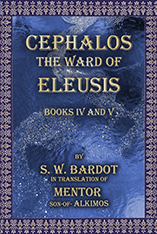 Bonus Plug to this Bardot Blog Posting:
Bonus Plug to this Bardot Blog Posting:
Having mentioned that the Second Part of the Heloides Saga, by a first divergence of paired mythic personages, it’s about Phrixos, the husband of Medeia’s sister Chalkiope, and Helle, his own sister, also born of Athamas, a petty king of the Low Midlands which preceded Boeotia by name of origins; the First Past divergence preceded the famous story above abbreviated about Medeia and Jason as their adventure of the ship The Argo. Less I prove unworthy of my Bardot Blog rules for omission, I abbreviate aboit Phrixos and Helle as follows.
The story is far fetched from first lines enunciated, that the fraternal twins were demi-gods as progeny of a fantastical Nephele, Titaness of the Clouds, who incarnated herself purposively to tryst with Athamas, the supposed king of Boeotia. Subsequent to that birthing, Aietes, after he became the widower of Idyia, the mother of Medeia and her younger sister Chalkiope, married a grossly materialistic Ino. About that second wife we know naught else than how she became reasonably very jealous of Chalkiope from the git-go of her marriage to Phrixos. Because her father, Aietes himself, was a demi-god by the siring of Helios Hyperion with an Oceanid nymph born of Oceana dn Tethys. Become a widower, he had been most determined that his charming younger daughter marry a demi-god who was willing to marry into her homeland. Howsoever his dubious titanic genealogy, Phrixos was just so eligible, thuis readily be-groomed; and he fell in love with Chalkiope as soon as they met. Soon they conceived four sons together at very close ages by the birthing deliveries apart. [Note: Such was the mating and consequence of many marriages at the top line of demi-gods’ and -godddesses’ genealogies at their originations].
 Ino their stepmother detested became aghast over the large divisions of inheritances that Chalkiope’s fecundity had accomplished for her father Aietes. Desperate to quash them, after much scheming, intrigue and marvelously wrought wicked calumny she managed to bring Phrixos and and the very likely fecund Helle to punitive statuses requiring their executions. The saving of them from immolation by fire, by a flying golden ram, we must instantly despise as as a salvation plot motif. Allow, nonetheless, that Phrixos was goaded to flee and take Helle with him in rescue, even to the abandonment of his cherished Chalkiope. His mother Nephele, therefore, discloses properly as the means of deliverence. She carried them aloft upon a most buoyant cloud and brought it to an arc of flight bearing easterly over the geographic cleavage of Europa from Asia. Alas, the ascent so steep until the arc leveled off at apogee had the light and weakling Helle fall off to her doom. Phrixos then slid off the slope of accent to be safely restored to Chalkiope and her fecund lap, Somehow Ino was destroyed by Aeetes, who sole ambitions switched from a grapacious wife to far foreseen maritime commerce objectives, which the Phrixids, as those boys grown to manhood became called became master mariners at secret but constant navigation along the Silent Shore of the Italian Peninsula.
Ino their stepmother detested became aghast over the large divisions of inheritances that Chalkiope’s fecundity had accomplished for her father Aietes. Desperate to quash them, after much scheming, intrigue and marvelously wrought wicked calumny she managed to bring Phrixos and and the very likely fecund Helle to punitive statuses requiring their executions. The saving of them from immolation by fire, by a flying golden ram, we must instantly despise as as a salvation plot motif. Allow, nonetheless, that Phrixos was goaded to flee and take Helle with him in rescue, even to the abandonment of his cherished Chalkiope. His mother Nephele, therefore, discloses properly as the means of deliverence. She carried them aloft upon a most buoyant cloud and brought it to an arc of flight bearing easterly over the geographic cleavage of Europa from Asia. Alas, the ascent so steep until the arc leveled off at apogee had the light and weakling Helle fall off to her doom. Phrixos then slid off the slope of accent to be safely restored to Chalkiope and her fecund lap, Somehow Ino was destroyed by Aeetes, who sole ambitions switched from a grapacious wife to far foreseen maritime commerce objectives, which the Phrixids, as those boys grown to manhood became called became master mariners at secret but constant navigation along the Silent Shore of the Italian Peninsula.
Phrixus and Helle, twins of Athamas, king of Boeotia, and Nephele (a goddess of clouds),
attempt to flee their hate-filled stepmother Ino by crossing the sea between Europe and Asia
by flying as mounted upon a golden ram. Helle having fallen from the ram and her brother
Phrixos futilely attempting to save her, he fails to rescue her as she drowns where the later
Dardanelles, which were long or alternatively named the Hellespont in commiseration.
The happy ending of both Part 2a and 2b of the Saga of the Oceanoides became of Medeia’s loathing of her husband Jason; and also her wishes to make generous amends to her father by nurturing the progeny of Phrixos and Chalkiope. Once she was married to Aigeus of Attica and forgiven for infanticides of her own children by Jason’s siring, she exercised most remote stewardship of the Nephews paternal legacies, affording them her own inherited emporia by her mother Idyia, who considerable landedness had lain upon the Isthmus of Ephyrea. Cephalos was fated to closely befriend her and assist her at isthmian stewardship by best abetting her Phrixid Nephews, because, of course, the ever valiant and brilliant queen consort could not manage a vast maritime hegemony of the Oceanides as capitally seated the original high city of Athens, the Kekropia.
 Book IV: High Prince of Attica: Opening review
Book IV: High Prince of Attica: Opening review Nonetheless, he was glad to be going home to the small principality of his mother’s Eleusis. He looked forward to becoming hands on and active again within the East Bay Attica, and with his cousin Lykos the Vice-Regent who commanded its sacral commmonwealth high sisterhoods by Brauron Basin & new surrounds. He used a chill back end of the 1370 winter to search for the most lovely person whom he’d last chanced to connect with most spiritually while upon his voyage up to Magnesia in the late summertime of 1373. The portrait that I’ve plagiarized from the modern oeuvres of Maxwell Parrish captures how that maiden postulant priestess had appeared, while utterly unconscious that an advanced war galley of very light configuration was sneeking up on her to capture her in disheveled appearance of loosest work garments and mood by the young beyond the sunrise. She’d been vigorously sensate of some kind of agony of pestering frustration, also of some great challenge to her patience, and she was musing almost in prayer for a better revelation of some certain promise that had been made to her.
Nonetheless, he was glad to be going home to the small principality of his mother’s Eleusis. He looked forward to becoming hands on and active again within the East Bay Attica, and with his cousin Lykos the Vice-Regent who commanded its sacral commmonwealth high sisterhoods by Brauron Basin & new surrounds. He used a chill back end of the 1370 winter to search for the most lovely person whom he’d last chanced to connect with most spiritually while upon his voyage up to Magnesia in the late summertime of 1373. The portrait that I’ve plagiarized from the modern oeuvres of Maxwell Parrish captures how that maiden postulant priestess had appeared, while utterly unconscious that an advanced war galley of very light configuration was sneeking up on her to capture her in disheveled appearance of loosest work garments and mood by the young beyond the sunrise. She’d been vigorously sensate of some kind of agony of pestering frustration, also of some great challenge to her patience, and she was musing almost in prayer for a better revelation of some certain promise that had been made to her.








 The Second Book
The Second Book


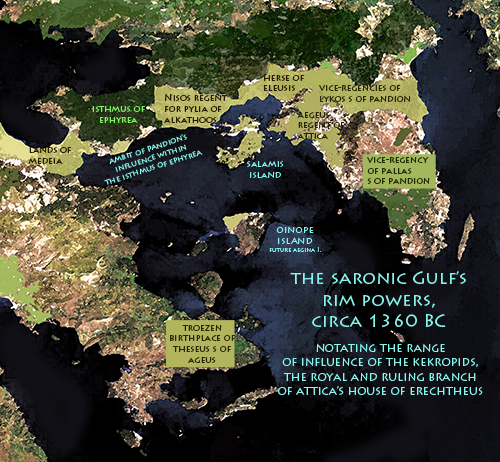

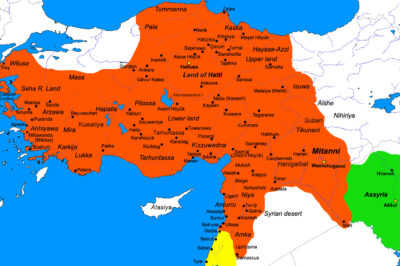


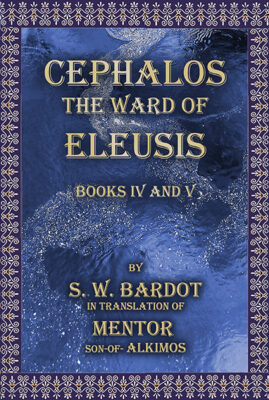 T
T


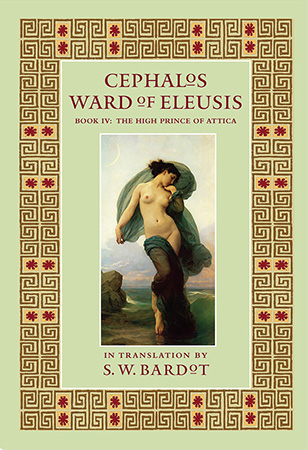


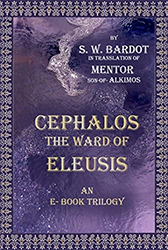

You must be logged in to post a comment.